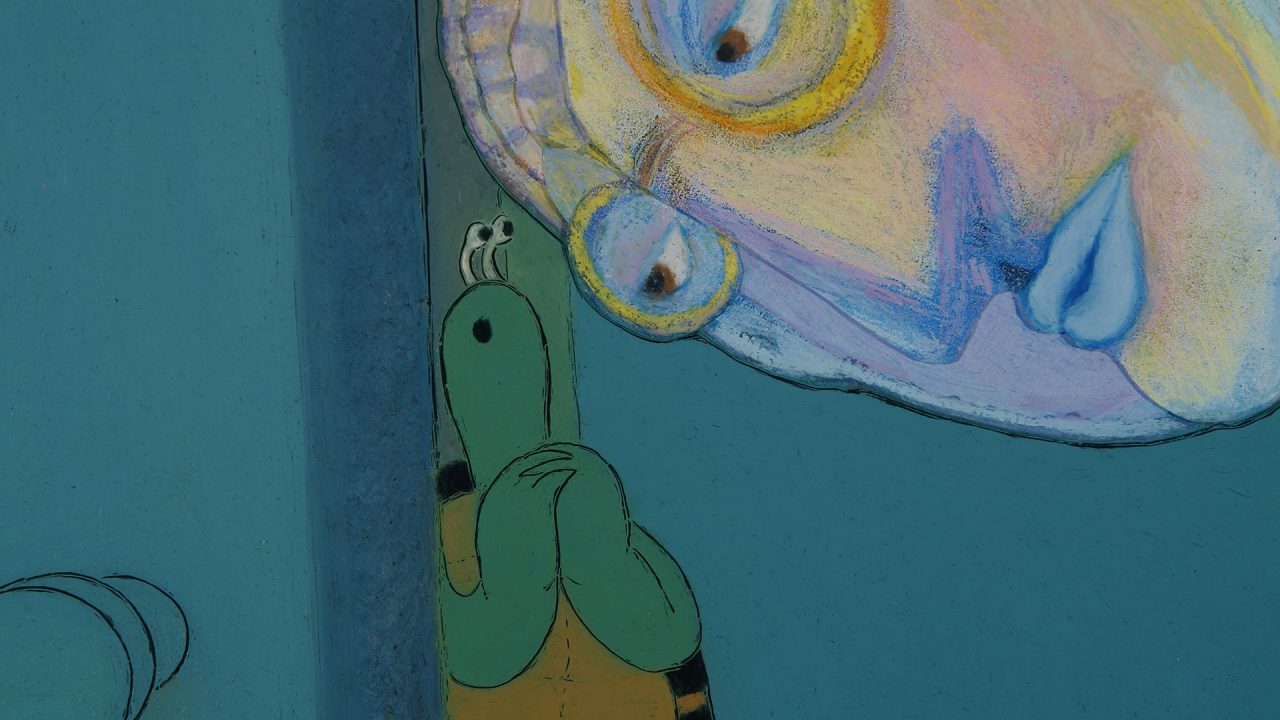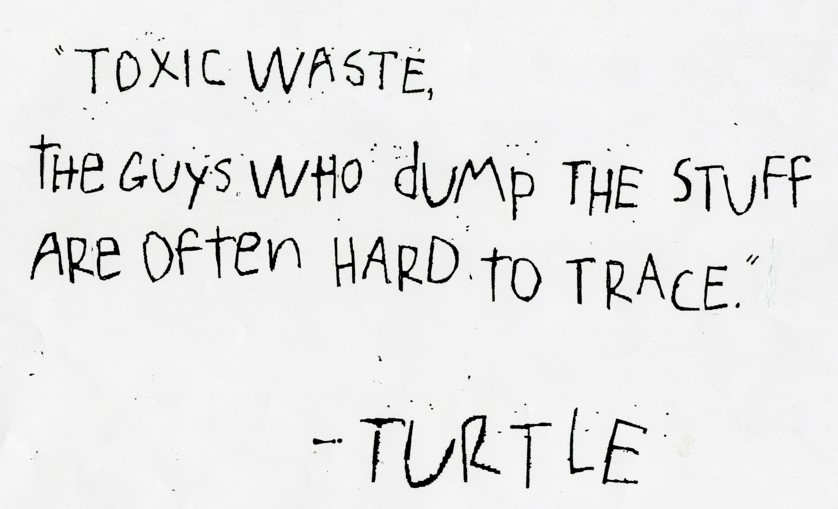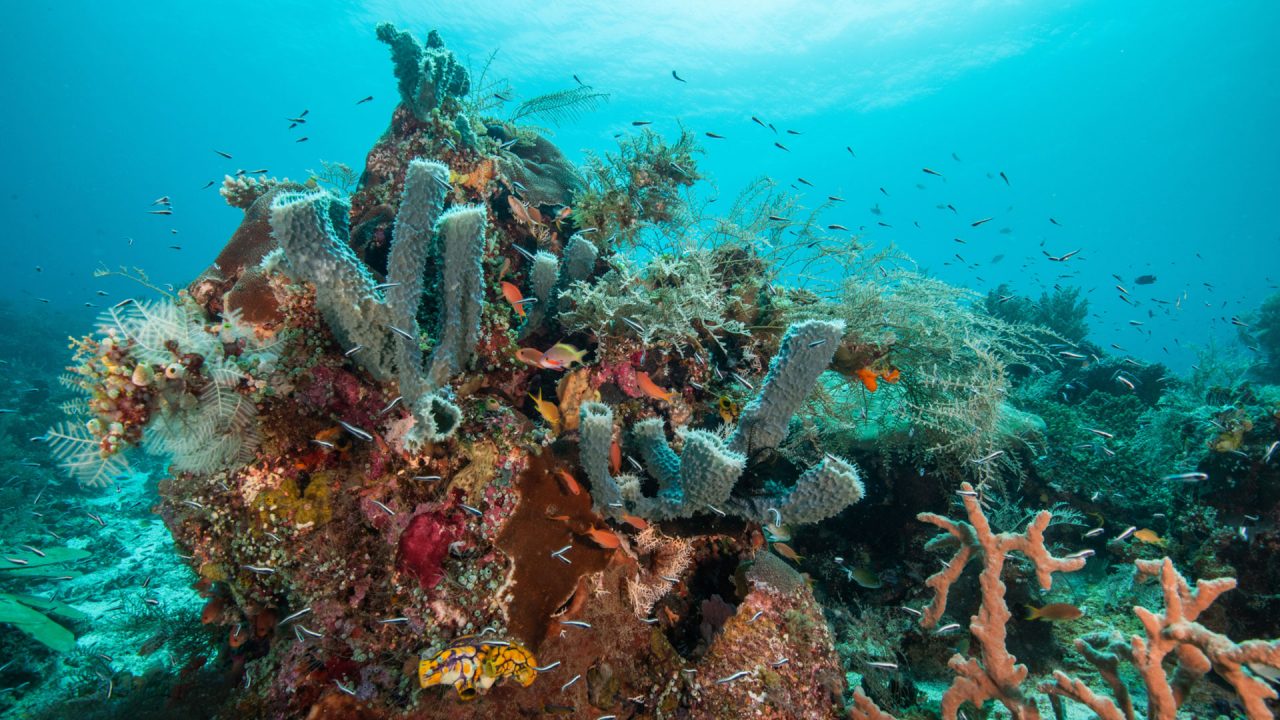
Mini-Lesson for What Rhymes with Toxic
Mini-Lesson for What Rhymes with Toxic
School Subjects:
- Social Studies – Environmental Challenges
- Science – Environmental Science
- Health – Mental Health/Stress
- Geography – Environmental Issues
Ages: 12-14
What Rhymes with Toxic, Lynn Smith, provided by the National Film Board of Canada
Keywords/Topics: Eco-Anxiety, Environmental Education, Water Pollution, Toxic, Environment, Nature, Sustainability
Educational Synopsis
In this animated short film, we meet a councillor who’s in denial about the negative impacts of a chemical leak in the lake that supplies his town’s water. A turtle visits the councillor’s home to explain the problem, but the councillor refuses to admit anything is wrong and meets his demise.
The mini–lesson helps students understand how to recognize eco-anxiety, how to cope with environmental denial and provides strategies to reduce fears about the future. At the end of this mini-lesson, you’ll find a culminating Take Action activity, which consists of researching what some people are doing to fight environmental disasters in their communities and by helping students navigate the discourse on climate change and climate change denial.
Warnings: Mild violence shown, when chest cavity opens and organs explode.
General Note on the Emotional Impact of the Film:
Watching some NFB productions may evoke strong emotions due to your own experiences with stress, anxiety, or other mental health conditions. This can be difficult to admit and discuss. However, these topics and feelings can be acknowledged and worked through if we remember to be respectful of each other’s experiences and are intentional in how we enter and leave learning spaces like this. Teachers should ensure that adequate preparation time is allotted to plan for these conversations. If students feel the need to speak with someone after watching a production, they can reach out to teachers, or school counsellors. It is important that opportunities be provided for students to talk through and unpack their feelings.
What is Eco-Anxiety:
According to science.gc.ca, eco-anxiety is: “where people feel distress over the environmental upheaval caused by climate change.” These feelings can be overwhelming and make some people feel anxious about the environmental state of the world and their future.
Suggested Resources for Additional Information on Eco-Anxiety:
https://science.gc.ca/site/science/en/blogs/science-health/science-adapting-climate-change
https://www.earthrangers.com/EN/CA/eco-anxiety-resources/
https://www.nationalgeographic.co.uk/family/2021/04/helping-kids-deal-with-climate-anxiety
Suggested Student Activities to Cope with Eco-Anxiety:
- Brainstorm environmental issues that are causing anxiety for students. Explain that focussing on the problems can create eco-anxiety.
- To cope with eco-anxiety, students could either take action themselves or learn about others who are taking action.
- Immediate Action: Take the students outside and remove litter, especially near waterways and sewer grates. You could pledge to continue this clean-up yourselves or create a campaign to involve the community to help.
Overarching Question: What can be done to cope with the denial of an environmental crisis?
Activity 1: Definitions and Big Questions
The teacher raises questions for students to reflect on.
The radio announcer said, “Chemical sludge continues to pour into the lake in the upper valley…” and the turtle’s first line is, “It’s toxic in there.” Meanwhile, Flutz shut off the radio and drank the water.
- Discuss the meaning of the word “toxic” with regard to the chemical sludge, and also consider the attitude of councillor Flutz. How are students feeling about the issue being presented?
Review the clip a second time and have students observe more details in the animated storytelling. They may notice the sludge-like appearance of the opening frame and that Flutz takes a sip of the water.
- The turtle’s first rhyme is, “Who lives? Who Dies? Why do humans get to decide?”
Do a Think-Pair-Share answering the turtle’s question.
Summary: The introduction of the film sets us up with key questions about the impact human life is having on the planet. Students can watch the clip several times to observe the critical storytelling details in the animation.
Activity 2: Denial or Acceptance?
Why does the councillor deny the problem of toxic water even when he is surrounded by dead animals?
What would happen to the councillor if he admitted the water was toxic?
Role-play a prediction about the conclusion of this story. In partners, one person is the turtle and the other is the councillor. Create an ending to the film in which the councillor continues to be in denial. What could happen to him?
Then, role-play an ending with the councillor admitting there is a problem and taking action to solve the problem. Would the truth set him free?
OR
Create a T Chart with the headings “Denial” and “Acceptance” and have students make predictions about the ending of the film under each heading.
Survey the class about which ending they think will happen. Will the councillor continue being in denial or will he accept there is a problem with the toxic water and take action to solve it?
Summary: Truth can be very difficult to face, but failure to do so can have terrible consequences. Students will use their imaginations and empathy as they predict what could happen to the councillor and the turtle.
Activity 3: A Note to the Turtle
Give students time to reflect on what happened in the film. Ask them to monitor their feelings. Students will react in a variety of ways, from laughter to shock. Go back to the prediction chart and review the results. How accurate were the students’ predictions?
With Flutz gone, the turtle goes back to the water. What if she left behind the note below? How would you respond to her? What advice can you give knowing the turtle cannot afford to give up? Students may wish to work in partners for this activity and then share their note with the class.

Summary: Now that students have viewed the ending, they can reflect on the impact of the film and how they are left feeling. Giving the turtle an encouraging note is one way to counter eco-anxiety.
Take Action
Research: Choose one of the following and prepare a slide explaining key steps that scientists, Indigenous Peoples and governments are taking to solve environmental issues.
- Learn about 17-year-old Autumn Pelletier, the water commissioner for the Anishinabek nation. https://www.youtube.com/watch?v=A33XRMLBbOc
- Study sustainable practices in the cod fishery off the coast of Newfoundland. https://oceanschool.nfb.ca/media/every-single-fish
- Study the relationship between the Heiltsuk people and the land/water in coastal B.C. https://oceanschool.nfb.ca/student/media/land-and-sea-360
- A more difficult challenge: look into the water issues in Flint, Michigan, and learn about lawsuits and criminal charges. https://www.pbs.org/newshour/show/6-years-after-water-crisis-began-what-has-changed-in-flint-and-what-hasnt
Suggested Extension Activity:
Have students research the term ‘greenwashing’. What does the term refer to and how are companies utilizing it for marketing purposes? Have students choose a product that they use or consume that has been promoted as environmentally friendly or sustainable. Then have students research the product to verify if these claims are true or not. As a class, discuss how ‘greenwashing’ is contributing the discourse around climate change.
This mini lesson was written in collaboration with project consultant Brenda MacNaughton.
Brenda MacNaughton is a teacher-librarian at a K–8 school, where she also teaches media literacy, health and the arts. Brenda strives to develop relationships with the First Nations, Métis and Inuit (FNMI) community and is a strong supporter of the environment. She recently received a community service award for her work with a local First Nation to create a pollinator and medicine garden at a community park.
Pour lire cet article en français, cliquez ici.
Discover more Mini-Lessons | Watch educational films on NFB Education | Watch educational playlists on NFB Education | Follow NFB Education on Facebook | Follow NFB Education on Pinterest | Subscribe to the NFB Education Newsletter



